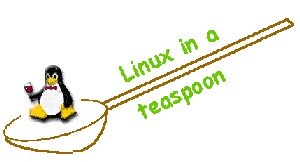One of the most frequently used key combinations to log off a PC is a
Ctrl+Alt+Del. But every time we do this and walk away, the computer remains on and consumes energy, resulting in wastage of both money and power.
Not just that, the power consumed by your PC also adds to global warming! A 65 watt power processor in a computer consumes about 234 KW power if it works for 12 hours a day for 300 days. If there are an estimated 15 million PCs in India, then it could result in consumption of 35.25 terra watts of power a year which means a whopping 4, 92,748,000 barrels of oil to produce that amount of energy.
This is just one aspect of the energy crunch facing India. According to the Central Electricity Authority, at the current annual generation capacity of 1, 35,000 MW, there s a shortage of nearly 10% and it will only get worse. No wonder that the corporate sector is opting for intelligent power usage. Companies are designing innovative products and programme to increase energy efficiency and cut costs.
India Inc steps in
For example, IBM has integrated energy conservation into its environmental management system since 1974. Between 2000-2005, it reduced PFC emissions by 58% and made the technology available to others in the industry.
In India, they launched Intelligent Energy Campaign last year and Project Big Green in June 2007.The initiative includes new products and services for clients to sharply reduce data centre energy consumption, transforming the worlds business and public technology infrastructures into green data centers..
Statistics show IT data centers consume 15 times more energy per sq ft than a typical office building and, in some cases, may be 100 times more energy intensive. According to IDC, expenditure on power and cooling in data centers is growing at eight times the rate of expenditure on hardware. So green teams of energy efficiency specialists, as set up by IBM, is a step forward.
Similarly, AMD India makes sure the PCs in its offices are switched off, screen savers are not used and ACs is fitted with thermostats that modulate temperatures. ˜ ˜The Company also uses Power Now in its server processors that helps reduce energy consumption of the server, says Deepanshu Sharma, GM Marketing, AMD India.
Green grid
In another initiative, a consortium of IT giants like AMD, Microsoft, Dell, Sun, IBM et al, have set up The Green Grid - a platform for IT professionals who aim to cut power consumption in data centers. It offers solutions and suggestions on the best practices available.
Green buildings are another concept fast gaining popularity. Commercial buildings are responsible for at least 40% of energy use in most countries. Industry estimates say green buildings can save up to 50% energy, 35% of water usage and improve employee productivity by up to 10%. Adds Manoj Mathur, regional head, Trane India Ltd which helps make ˜green buildings, Better usage of heat from the building can also be done. For example, in the process of cooling buildings, a lot of heat is wasted. This heat can be captured and used for a wide range of applications, like water heating etc.
The commonly-used incandescent bulb too wastes up to 95% of its energy on generating heat ” only 5% goes into producing light. This at a time when the global demand for energy is expected to grow 53% by 2030 ” 70% of this demand will come from China and India alone.
S Venkataramani, head, lighting division, Philips Electronics India, says, ˜ ˜In India, 18,000 MW power is used for lighting purposes alone annually. A study done by MAIT-Emerson Network Power (India) on network power downtime reveals... India Inc could be losing over Rs 22,000 crore in direct losses due to poor power quality and operating environment related downtime. This is estimated to be around 2.2% of the gross output of the total industrial and service sectors.
Now, Philips India is in the process of creating an ecosystem comprising industry bodies, governments and NGOs and education institutes to break down the barriers against adoption of energy efficient lighting. It s promoting compact fluorescent lamps (CFL) that save energy by 80%. That s a saving of Rs 500 and 84 kg of CO2 per lamp per year, says Venkataramani.
None of these initiatives will work unless there is collaboration by all concerned. As Pillai says, For intelligent energy solutions to succeed, there must be a concerted and collaborative effort by industry, government and consumers; no company or organization can do this alone. Recognising this, the corporate world seems to have taken up the challenge of balancing both market needs and environmental priorities.







